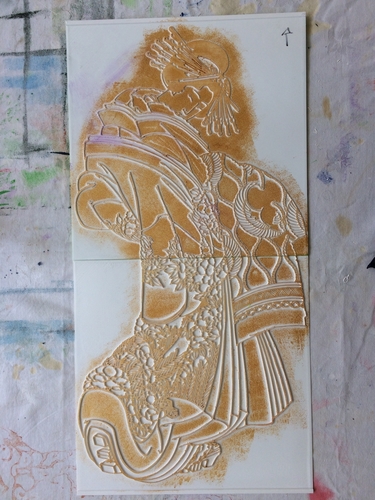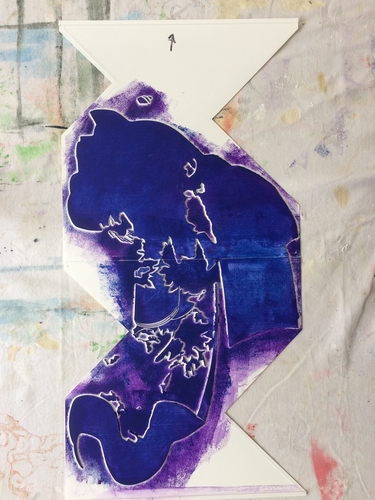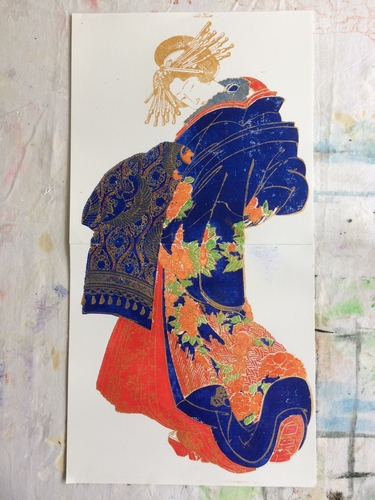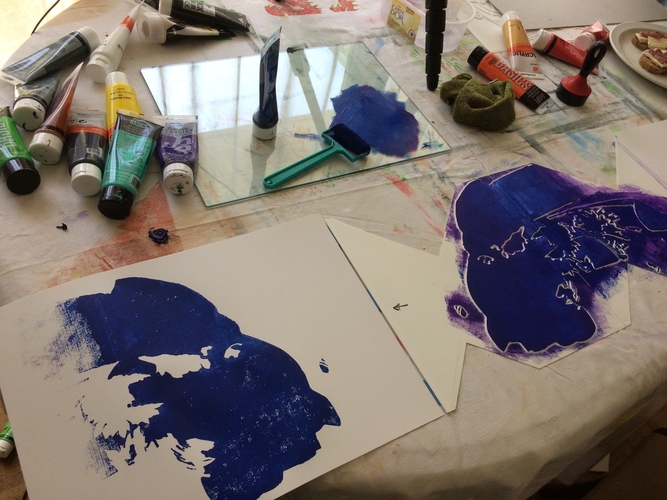






Prints (0)
-
No Prints Yet
Be the first to upload a Print for this Design!
Description
I have to split the 14x 3D prints in the upload page due to the 100mb limit on Pinshape. Part 1 has four prints, Part 2 has four prints and Part 3 has six prints. Part 2 and 3 are free but part 1 is paid.
Part 2 https://pinshape.com/items/45855-3d-printed-part-2-of-3-geisha-by-katsushika-hokusai
Part 3 https://pinshape.com/items/45857-3d-printed-part-3-of-3-geisha-by-katsushika-hokusai
There are 14 plates in total, each two plates must be taped together to make one full plate (see pic), hence 7 full sized plates/7 different colours. You can refer to the finished image for a colour reference but choose your own colours by all means, the plates will last for many many prints and if you use acrylic which dries in a few minutes, you don't have to wash the first layer old paint off, in fact the surface gets better after old paint has dried onto it but you should wash paint off from subsequent print sessions to avoid buildup. I usually place them in soapy water and wash them when I'm done with the session. Full instructions are on the PDF called 'The Kit'.
The files are named with the suffix 'top' and 'bottom' to help you figure out which ones to tape together, I recommend gaffer/duct tape. I have also included instructions about which plates need to be used first and which have to be used last, so that you don't get some layers of colour hiding the layer beneath it.
I use 0.6mm nozzle and a 0.2mm layer. Use your normal settings for printing 100% solids. I don't recommend using high infill to achieve this, instead increase the top and bottom layers count to above 4 and it will make a solid if your layer height is indeed 0.2mm. The reason for not using a high percentage infill setting to get a solid print is to avoid long stretches of printer vibrations while it tries to do a very fine honeycomb structure, alternatively you could use a rectilinear patter infill which is less vibey if you really want to avoid making 100% solid prints. After printing each plate, use a sanding block and 120 grit sandpaper to make the top surface flat so it holds paint evenly. This does not take long if you have used PLA plastic which is quite soft. The solid strip of plastic is where you should attach your paper, make sure the paper is attached at the same place each plate so the colours align well.
More info at https://bramtan.weebly.com/developing-3d-printed-ukiyo-e.html
More designs to come. Enjoy!
Comments